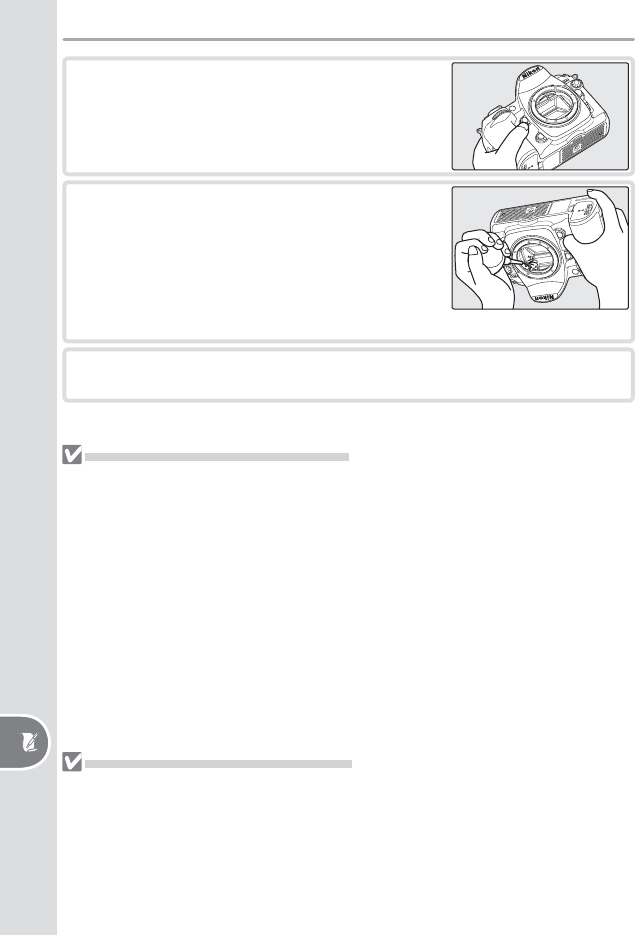
186
Technical Notes—Caring for the Camera
5
Re move any dust and lint from the fi lter with a
blow er. Do not use a blower-brush, as the bris-
tles could damage the fi lter. Dirt that can not
be removed with a blower can only be re moved
by Nikon-au tho rized ser vice per son nel. Un der
no circumstances should you touch or wipe the
fi l t e r.
6
Turn the camera off . The mirror will return to the down position and the
shutter curtain will close. Replace the lens or body cap.
4
Holding the camera so that light falls on the low-
pass fi lter, ex am ine the fi lter for dust or lint. If no
foreign objects are present, proceed to Step 6.
Foreign Matter on the Low-Pass Filter
Nikon takes every possible precaution to pre vent foreign matter from com ing into con tact
with the low-pass fi lter during production and ship ping. The D200, how ev er, is designed
to be used with interchangeable lens es, and for eign matter may enter the camera when
lens es are removed or exchanged. Once inside the camera, this for eign matter may adhere
to the low-pass fi lter, where it may appear in photographs tak en under cer tain con di tions.
To prevent foreign matter from entering the camera, do not exchange lenses in dusty envi-
ronments. To pro tect the camera when no lens is in place, be sure to replace the body cap
pro vid ed with the camera, being care ful to fi rst remove all dust and other foreign matter
that may be ad her ing to the body cap.
Should foreign matter fi nd its way onto the low-pass fi lter, clean the low-pass fi lter as in-
structed on pages 185–186 of this manual, or have the low-pass fi lter cleaned by autho-
rized Nikon ser vice per son nel. Pho to graphs aff ected by the presence of for eign matter on
the low-pass fi lter can be re touched us ing Nikon Capture 4 Version 4.4 or later (available
separately) or the clean image options available in some third-party im ag ing software.
Servicing the Camera and Accessories
The D200 is a precision device and requires regular servicing. Nikon recommends that the
camera be inspected by the original retailer or Nikon service representative once every
one to two years, and that it be serviced once every three to fi ve years (note that fees ap-
ply to these services). Frequent inspection and servicing are particularly recommended if
the camera is used professionally. Any accessories regularly used with the camera, such
as lenses or optional Speedlights, should be included when the camera is inspected or
serviced.


















